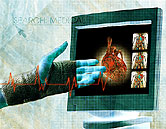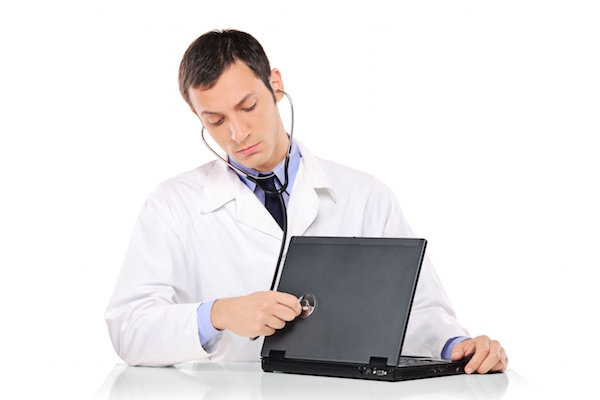
FRIDAY, July 9 (HealthDay News) — Cardiac imaging procedures, the use of which has exploded in the United States in recent years, are exposing patients to potentially cumulative doses of radiation, according to the largest analysis of its kind.
But experts really don’t know whether the amounts of radiation are harmful or what the long-term effects will be, according to new research published online July 7 in the Journal of the American College of Cardiology.
The analysis, which covered nearly one million adults in five parts of the United States, found that almost one in 10 people under 65 had a heart procedure involving radiation from 2005 to 2007.
About half (47.8 percent) of the imaging was done in physicians’ offices, and older individuals, men in particular, tended to have more exposure.
Most of the patients who did have radiation exposure “had more than the background radiation we get just by living in the U.S., from radon, from the food we eat, from cosmic rays,” said study co-author Dr. Andrew Einstein, director of cardiac computed tomography research at Columbia University Medical Center in New York City. “That means their main source of radiation is not radon, not cosmic rays, but tests.”
According to the study, the “mean cumulative effective dose over three years was 16.4 millisieverts (mSv),” which is more than background radiation exposure (less than 3 mSv) but less than the upper limit of occupational exposure (more than 20 mSv).
When the authors extended the findings to an overall U.S. adult population of about 191 million, they estimated that about 636,000 Americans might get annual doses of more than 20 mSv/year.
So how safe are you if you need a heart imaging test?
“The basic thinking in the U.S. is that there’s no dose of radiation that is completely safe. The lower the dose, the lower the risk,” Einstein said. “Can you ever say that there’s any street safe to cross? No.”
And, he added, “we didn’t look at the appropriateness of these tests. It may well be the case that, for the majority of these patients, the benefits of cardiac testing outweigh the risks.”
An accompanying editorial in the journal noted also that it has not been established that low-dose medical testing causes cancer.
Heart experts were quick to point out that cardiac imaging, particularly myocardial perfusion imaging and cardiac computed tomography, may be necessary in many cases to save lives.
“It’s always a matter of the risk versus the benefit, because in many cases these tests are absolutely necessary to make the appropriate diagnosis in a patient and get that particular patient onto whatever therapy is necessary to treat their condition,” said Dr. Gregory Dehmer, professor of internal medicine at Texas A&M Health Science Center College of Medicine and director of the cardiology division at Scott & White in Temple, Texas. “There are a lot more people that die from undiagnosed heart disease than are being adversely affected by having an extra heart test at one point or another.”
Cardiovascular disease, in fact, is the leading killer of both men and women in the world.
The issue of radiation exposure from medical imaging procedures in general is a hot one, and one that the U.S. Food and Drug Administration has taken on. In March, the agency hosted hearings on what should be done to increase the safety of increasingly popular imaging procedures.
According to the U.S. National Cancer Institute, about 70 million CT scans are now done in the United States each year. And according to background information in the article, nearly 10 million myocardial perfusion imaging (MPI) procedures were performed in the United States in 2002.
Einstein suggested that clinicians need to take into account “justification” (is it really necessary?) and optimization (is it at the lowest dose possible?) of the tests.
And, he added, carefully selecting which tests to use when can also minimize risk.
“Nuclear perfusion studies are important and sometimes are warranted, but it’s probably also true that many patients could be evaluated just as well with a stress echocardiogram, which doesn’t involve radiation and which is also less expensive,” added Dr. Ethan J. Halpern, vice chairman of radiology at Thomas Jefferson University in Philadelphia and a spokesman for the Radiological Society of North America.
“The bottom line is that these tests have to be used in an appropriate fashion,” Halpern said.
The study was done by a collaboration of scientists from Yale, Columbia University, Johns Hopkins, Emory University, Mount Sinai, the Mayo Clinic, Boston Medical Center and the University of Michigan.
More information
The Radiological Society of North America has more on cardiac nuclear testing.

